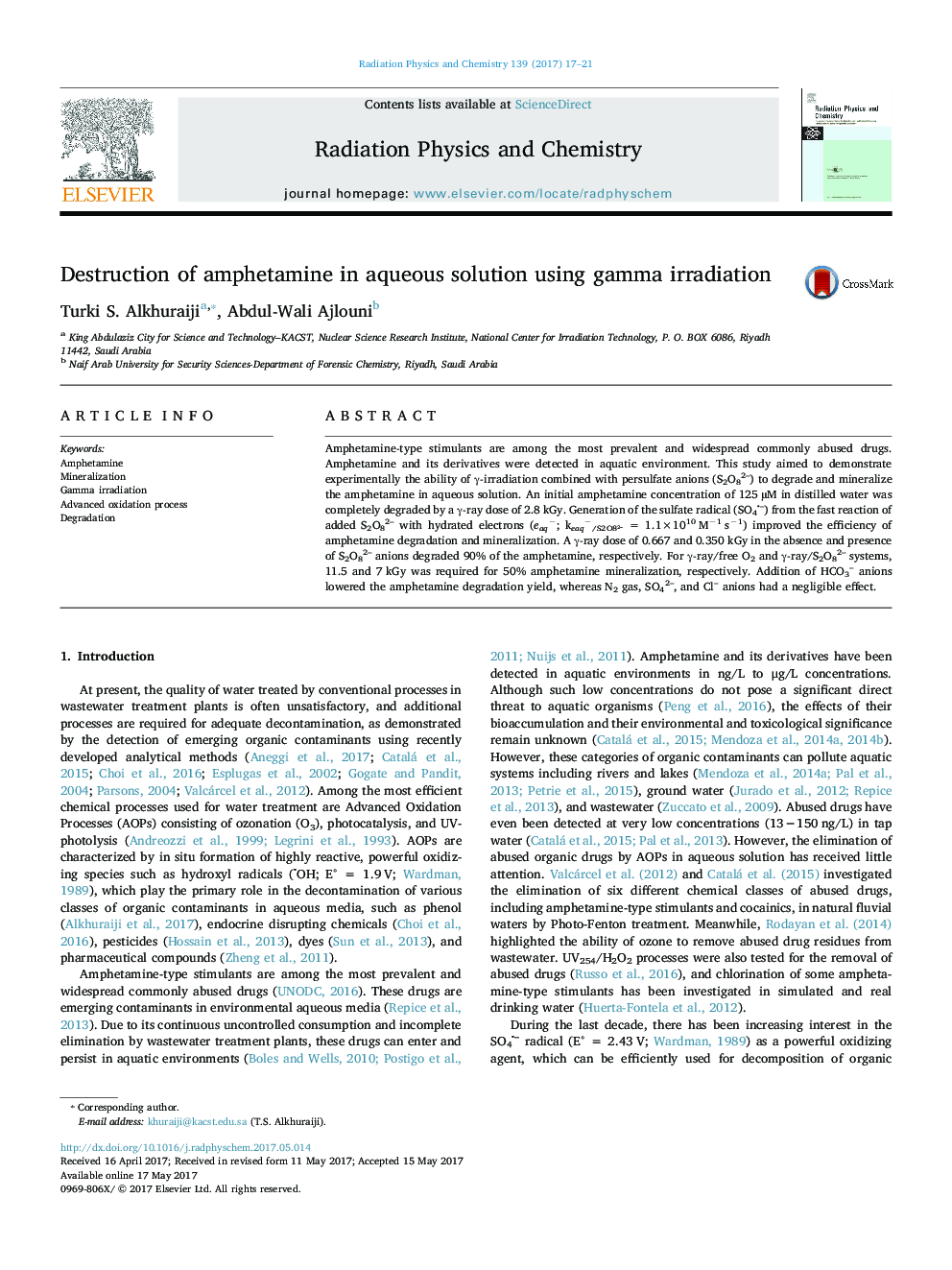| Article ID | Journal | Published Year | Pages | File Type |
|---|---|---|---|---|
| 5499158 | Radiation Physics and Chemistry | 2017 | 5 Pages |
Abstract
Amphetamine-type stimulants are among the most prevalent and widespread commonly abused drugs. Amphetamine and its derivatives were detected in aquatic environment. This study aimed to demonstrate experimentally the ability of γ-irradiation combined with persulfate anions (S2O82-) to degrade and mineralize the amphetamine in aqueous solution. An initial amphetamine concentration of 125 µM in distilled water was completely degraded by a γ-ray dose of 2.8 kGy. Generation of the sulfate radical (SO4
- -) from the fast reaction of added S2O82- with hydrated electrons (eaqâ; keaqâ/S2O82- = 1.1Ã1010 Mâ1 sâ1) improved the efficiency of amphetamine degradation and mineralization. A γ-ray dose of 0.667 and 0.350 kGy in the absence and presence of S2O82- anions degraded 90% of the amphetamine, respectively. For γ-ray/free O2 and γ-ray/S2O82- systems, 11.5 and 7 kGy was required for 50% amphetamine mineralization, respectively. Addition of HCO3- anions lowered the amphetamine degradation yield, whereas N2 gas, SO42-, and Cl- anions had a negligible effect.
- -) from the fast reaction of added S2O82- with hydrated electrons (eaqâ; keaqâ/S2O82- = 1.1Ã1010 Mâ1 sâ1) improved the efficiency of amphetamine degradation and mineralization. A γ-ray dose of 0.667 and 0.350 kGy in the absence and presence of S2O82- anions degraded 90% of the amphetamine, respectively. For γ-ray/free O2 and γ-ray/S2O82- systems, 11.5 and 7 kGy was required for 50% amphetamine mineralization, respectively. Addition of HCO3- anions lowered the amphetamine degradation yield, whereas N2 gas, SO42-, and Cl- anions had a negligible effect.
Related Topics
Physical Sciences and Engineering
Physics and Astronomy
Radiation
Authors
Turki S. Alkhuraiji, Abdul-Wali Ajlouni,
